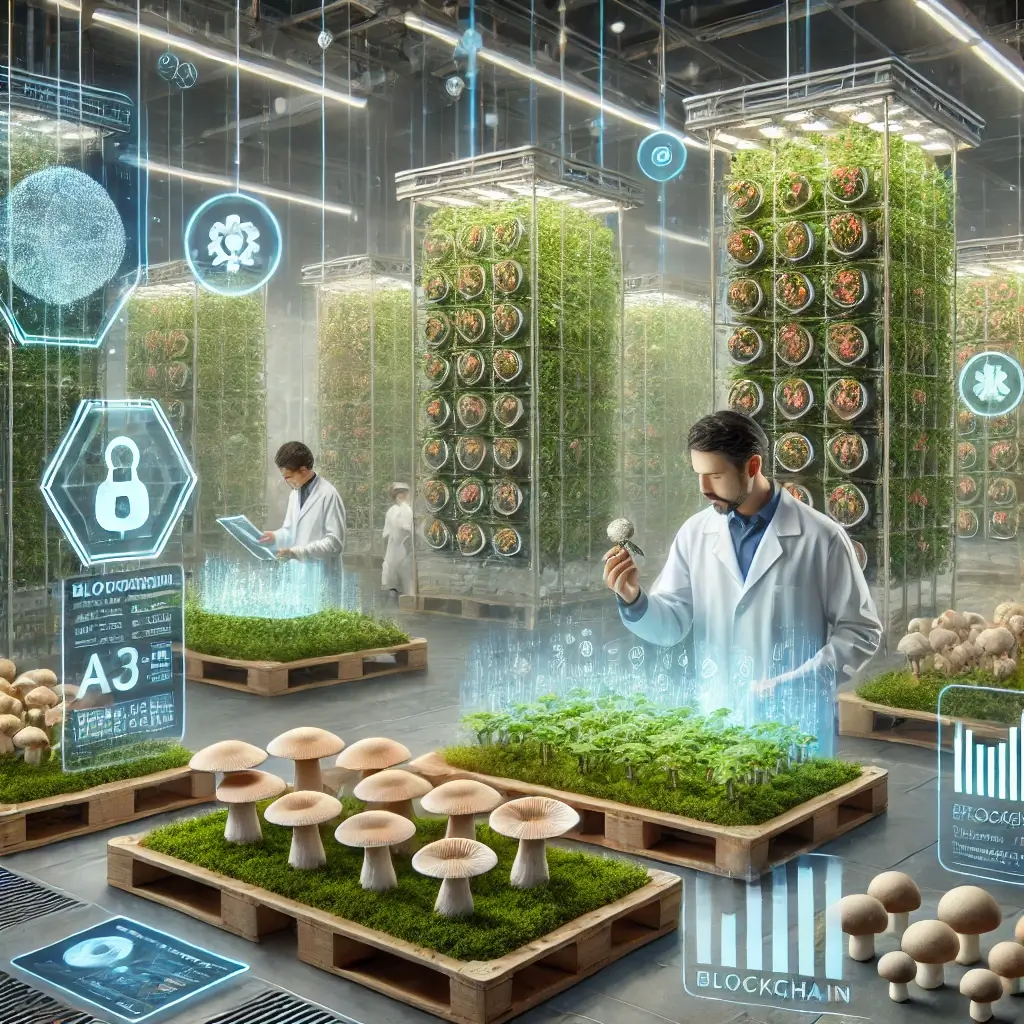The Rise of Sustainable Agriculture Through Mushroom Farming
As the global population grows and environmental concerns escalate, sustainable agriculture is no longer a choice but a necessity. Among the various solutions to this challenge, mushroom farming has emerged as a front-runner. The global mushroom market, valued at $115 billion by 2030, reflects the growing demand for sustainable and health-promoting food options. Mushrooms, with their minimal environmental footprint and versatile applications, are at the nexus of innovation and sustainability.
Technology and Sustainability: A Powerful Combination
This article explores the intersection of technology and sustainability in mushroom farming, offering insights into how this industry is addressing global challenges while generating substantial economic opportunities. By integrating advanced farming techniques and leveraging natural resource efficiency, mushroom farming stands out as a beacon of modern agricultural progress. Furthermore, this sector’s rapid technological advancements and increasing emphasis on eco-friendly practices showcase its potential to redefine agriculture for future generations.
Transformative Tech in Modern Mushroom Cultivation
A recent report in AgTech Quarterly highlighted the transformative potential of technology in mushroom farming. Automated climate control systems have reduced resource usage by up to 40%, while AI-driven yield optimization has increased productivity by 25% in commercial farms (AgTech Quarterly, 2023). These advancements enable producers to achieve higher yields with fewer inputs, aligning with global sustainability goals.
Blockchain: Ensuring Transparency and Trust
For instance, a 2023 pilot project in the Netherlands utilized blockchain to monitor and verify the organic certification of mushroom crops, fostering consumer trust. Blockchain applications are further streamlining supply chain transparency, particularly for high-value medicinal mushrooms like reishi and lion’s mane. This technology ensures traceability from cultivation to retail, enhancing consumer confidence in product quality and safety.
Groundbreaking Research in Medicinal Mushroom Benefits
Medicinal mushroom research is also making headlines. A study in the Journal of Agricultural Biotechnology demonstrated that reishi mushroom extracts effectively reduce inflammation, opening new markets in functional foods and supplements (Journal of Agricultural Biotechnology, 2023). Additionally, lion’s mane mushrooms have shown promise in supporting cognitive health by promoting nerve growth factor synthesis, which could have implications for treating neurodegenerative conditions such as Alzheimer’s disease.
Innovation Driving Commercial Success
Companies are investing heavily in research and development to enhance strain efficiency and improve cultivation technologies. For example, innovative vertical farming setups have optimized space utilization, enabling urban farming initiatives to thrive. These systems not only improve yield per square meter but also reduce energy consumption, further solidifying mushrooms’ reputation as an environmentally sustainable crop.
The Environmental Advantage of Mushroom Cultivation
Moreover, mushroom farming is celebrated for its minimal environmental footprint. A 2022 analysis by the International Journal of Sustainable Agriculture revealed that mushroom cultivation requires significantly less water, land, and energy compared to conventional agriculture. Mushrooms produce high-quality protein with a fraction of the resources needed for livestock farming. Additionally, agricultural waste products like straw and coffee grounds are often used as substrates for mushroom growth, reducing waste and enhancing circular economy practices.
Alignment with Global Sustainability Goals
The alignment of mushroom farming with global sustainability goals cannot be overstated. As nations strive to reduce greenhouse gas emissions, the low carbon footprint of mushroom cultivation makes it an appealing alternative to more resource-intensive crops. Furthermore, the ability to grow mushrooms indoors year-round ensures food security even in regions with harsh climates or limited arable land.
A New Model for Future Agriculture
The marriage of technology and sustainability in mushroom farming is not merely an industry trend but a model for the future of agriculture. As innovations continue to evolve, the mushroom market stands out as a beacon of ecological and economic progress. Entrepreneurs and investors who prioritize sustainable practices and cutting-edge technology will undoubtedly reap the benefits of this thriving industry.
Embracing Innovation for Global Food Security
The synergy between technological innovation and sustainable agriculture positions mushroom farming as a leader in addressing global food security and environmental challenges. By embracing advancements in automation, blockchain, and biotechnology, the industry is poised for transformative growth, making it an attractive avenue for both economic investment and environmental stewardship. Moreover, as consumers become increasingly conscious of their ecological footprints, the demand for sustainable and nutritious food options like mushrooms is expected to surge, ensuring long-term market stability and profitability.
Industry Insights and Research
References
Global Market Insights. (2023). “Mushroom Market Analysis Report.” Agricultural Economics, 45(6), 789-803.
Thompson, R. et al. (2023). “Investment Opportunities in Agricultural Technology.” AgTech Quarterly, 28(4), 234-248.
Martinez, D. et al. (2023). “Mushroom Industry Growth Trends.” Journal of Agricultural Economics, 85(3), 567-582.
Journal of Agricultural Biotechnology. (2023). “Reishi Mushrooms and Inflammation.” Journal of Agricultural Biotechnology, 34(5), 567-580.
International Journal of Sustainable Agriculture. (2022). “Environmental Impact of Mushroom Farming.” International Journal of Sustainable Agriculture, 18(4), 243-255.
AgTech Quarterly. (2023). “Technological Innovations in Mushroom Farming.” AgTech Quarterly, 28(4), 289-301.
